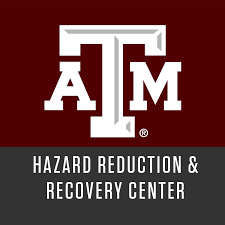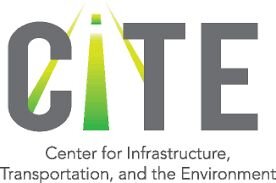Americas
 |
Centro de Investigación para la Gestión Integrada del Riesgo de Desastres - CIGIDENSantiago |
| Outline Disasters of natural origin present a series of technological, social and political challenges. From CIGIDEN (Research Center for Integrated Disaster Risk Management - CIGIDEN), we are generating scientific and technical knowledge to help improve the way the risk management cycle is approached in our country. We are an association of four universities (Pontificia U. Católica de Chile, U. Nacional Andrés Bello, U. Técnica Federico Santa María and U. Católica del Norte) which was born in response to the call made by the Chilean Government Scientific program in its fourth national competition of Priority Areas Research Centers to address research on disasters and their consequences. Our work is carried out under the conceptual framework of resilience, orienting our results towards the reduction of the initial impact of extreme events, and to restore and improve the functionality of the different systems that are affected by them in shorter periods.We are a research center of excellence whose mission is to develop, integrate and transfer scientific knowledge, and to form advanced human capital that contributes to reduce the social consequences of extreme natural events. We are organized in three research Clusters, namely:
Our mission is to guide the discussions and decisions that must be taken in the face of disasters, through scientific and technical evidence, to help implement improvements that increase the resilience of the country. Our main goal is to contribute to increasing levels of resilience and help mitigate the consequences caused by natural disasters. [detail] --> |
|
 |
Center for Emergency Management and Homeland Security (CEMHS)Arizona State University (ASU)Arizona |
| Outline We want to transform the emergency management and homeland security landscape through transdisciplinary discovery and practice, in which knowledge, risk reduction, community development and sustainability operate collaboratively to reduce risks and vulnerabilities and adapt communities to new "normals." By connecting practitioners, students and the wider ASU academic community and its resources, CEMHS is co-developing research and knowledge. |
|
 |
Center for Public Health Disaster Science , New York University (NYU)New York |
|
Outline The Center's Investigators conduct original research on population preparedness, response, and recovery; disaster impacts along the life-course; systems approaches to disaster studies; risk communication and decision-making; and the study of resilience. The Center serves as a resource to affected and at-risk communities; to policy-makers and public officials; to disaster and public health scholars; to the media; and to the public health students and the larger academic community at New York University. The current research portfolio of the Center includes NIH-funded work on long-term disaster recovery, NSF-funded work on the role of belief systems in vaccine-related decision-making, and CDC-funded work on developing performance measures of public health preparedness, as well as ongoing research on the impacts of COVID on the New York State health workforce. [detail] --> |
|
|
|
Center for Infrastructure, Transportation, and the Environment (CITE), Rensselaer Polytechnic Institute (RPI)
|
| Outline The Center for Infrastructure, Transportation, and the Environment (CITE) is a national and international leader in research, education, outreach, and technology transfer in the areas of infrastructure, transportation, and their links to the environment. The Center for Infrastructure, Transportation, and the Environment (CITE) is known generally for sustainable freight system and freight transportation planning research, as well as transportation planning, design and operations, modeling and simulation, disaster response logistics, traffic signal system control, and transportation-related behavioral research. The research can be organized into three focus areas: freight research, disaster response, and smart transportation systems. [detail] --> |
|
 |
Hazard Reduction and Recovery Center (HRRC), Texas A&M University (TAMU)Texas |
| Outline The Hazard Reduction and Recovery Center (HRRC) studies hazards and how they affect the natural and built environments and the people who live there. With a special focus on hazard mitigation and recovery, we generate research at the forefront of hazard planning. Texas A&M University's Hazard Reduction and Recovery Center (HRRC) is an interdisciplinary research effort. Established in 1988, the HRRC was the first research center dedicated to vulnerability reduction and long-term recovery in the nation. Today, we are one of only two United Nations (UN-OCHA) Collaborative Centers in the world. We serve OCHA as a research and consultant agency with particular emphasis on national disaster plans and their implications for future development. [detail] --> |
|
 |
Wind Hazard and Infrastructure Performance Center, Texas Tech UniversityTexas |
| Outline WHIP Center will conduct research to support industries and government agencies that are interested in developing new solutions and products to reduce the impact of hurricane, tornado and severe wind events on buildings and infrastructure while educating the next generation of professionals. The WHIP Center's mission is to pursue research of interest to industry and government agencies to enhance the resiliency of buildings and infrastructure to extreme windstorms such as hurricanes and tornadoes. [detail] --> |
|
 |
Geologic Hazards Science Center, U.S. Geological SurveyColorado |
| Outline The Geologic Hazards Science Center (GHSC), on the Colorado School of Mines campus, is home to the National Earthquake Information Center (NEIC), many scientists in the Earthquake Hazards Program and Landslide Hazards Program, as well as the Geomagnetism Program staff. Created by an act of Congress in 1879, the U.S. Geological Survey has evolved over the decades, matching its talent and knowledge to the progress of science and technology. The USGS is the sole science agency for the Department of the Interior. It is sought out by thousands of partners and customers for its natural science expertise and its vast earth and biological data holdings. [detail] --> |
|
 |
Center for Coastal Studies, Virginia Polytechnic Institute and State UniversityVirginia |
| Outline The Center for Coastal Studies' mission is to inspire societally relevant solutions to the complex challenges emerging in the coastal zone. Nearly half of the world's population lives in the coastal zone and is, therefore, exposed to impacts of terrestrial and marine processes. Currently, six in ten Virginians live in the coastal zone. Sea-level rise, urbanization and other stressors threaten important nodes of the global economy, critical infrastructure for civil and national security, and fragile ecosystems. Human and ecosystems well-being, economic prosperity and security are interdependent and form a complex coupled network, defining a nexus of resource limitation, opportunity, and vulnerability from which knowledge crucial for the design of sustainable solutions can emerge-the Center for Coastal Studies overarching goal. The Center for Coastal Studies promotes a vibrant future for the world's coastal zones through enabling, facilitating, and rewarding transdisciplinary research, education, and engagement. [detail] --> |
|







